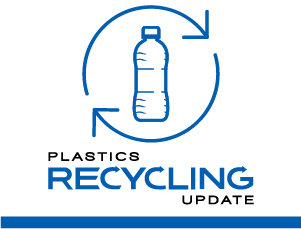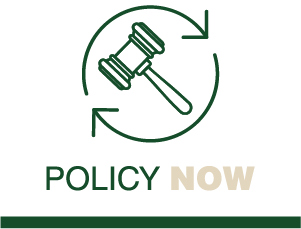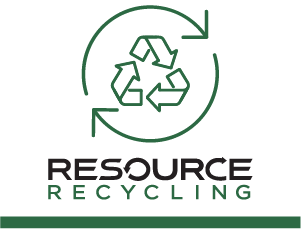The Circular Action Alliance is asking for several changes to extended producer responsibility deadlines in response to the delayed rulemaking on SB 54.
CAA flagged several areas that represent compliance and cost challenges, including the deadline to submit the program plan, early fee payments, source reduction supply timing, de minimis approach timing and the producer definition.
Gov. Gavin Newsom’s recent decision to restart the rulemaking process for SB 54 scrambled timelines for producer responsibility organization CAA and the California Department of Resources Recycling and Recovery, as both still have to meet the original deadlines set out in the law in less time.
Shane Buckingham, chief of staff at CAA, said during a presentation at the April 18 advisory board meeting that it’s vital to meet the regulatory filing date of Aug. 31, so the effective date will be Oct. 1 to stay on track. The PRO suggested cutting down CAA’s time period to review comments on the plan from regulators to 60 days, down from 120 days and 90 days.
That would enable approval of the program plan by the deadline of Jan. 1, 2027, and provide three additional months to actively work on the plan.
“We were just putting that out there to really get people thinking about everything that needs to happen in order to get a plan developed, reviewed and launched on time,” Buckingham said in an interview with Resource Recycling.
CAA is also proposing a deadline for producers to join CAA and register with CalRecycle of Oct. 1 and a deadline of Nov. 1 to report supply baselines for 2023.
Buckingham noted in the presentation that CAA wants to “have producer registration deadlines earlier so we can build with the data.”
Areas of concern for CAA
Buckingham shared a slide deck of issues CAA would like to see addressed and potential solutions.
The problem with the de minimis approach is a “sequencing issue,” according to the slides. The regulations state that producers must report 2023 supply data to CAA to inform the source reduction and fee estimates before the program plan submission, but the de minimis approach must also be developed and approved as part of the plan.
The de minimis approach means that some small plastic components may not need to be reported as a plastic component under certain conditions. For example, there are separate categories for tin cans and tin cans with a plastic component, and if a can’s plastic liner is less than the de minimis weight or volume, the producer could report it as a simple tin can.
Those de minimis requirements need to be set in the PRO plan and approved by the department, but producers will need to know before then to report supply data and individual source reduction plans.
“We’re saying that the producer needs to know how to classify their covered material before the plan is even submitted and reviewed and approved by the department, so we want that clarity for the producer up front,” Buckingham said in the interview.
To fix the “regulatory contradiction,” CAA would like the de minimis approach to be set before producers have to report.
The eco-modulation fee and source reduction requirements run into similar issues: Deadlines come before the data will be available.
When it comes to the eco-modulation model, creating a strong model “depends on detailed producer supply data reporting,” CAA noted, but “experience in jurisdictions indicates that it can take multiple years for producers to refine their reporting practices and for the PRO to obtain the necessary data to develop eco-modulation policies.”
However, under the current rules, eco-modulation of fees would take effect in the third year of operation, which includes time spent preparing the plan. CAA is asking to use a simplified eco-modulation fee schedule until Dec. 31, 2028, at which point the full model can take effect, which would be the third year of operation under the program plan.
That would not only give CAA more time to develop the eco-modulation approach, Buckingham said, but also give producers more time to get used to reporting on the 94 covered material categories that have already been published, along with components.
“That’s going to be challenging enough,” he said, without adding fee modulating that would require even more data collection from the start.
“Let’s start with the reports that we need in the 94 categories with the component reporting, let’s ensure that producers are able to compile and submit those reports so we can get the source reduction plan and the initial fee estimates established, and then let’s introduce new forms of data collection later in the operation of the program for eco-modulation,” he said.
The source reduction baseline also requires full and accurate data reporting to “establish a rigorous baseline based on actual supply,” CAA noted.
“CAA has long called for a baseline adjustment once producers report their supply data,” according to the presentation, but the draft regulations currently require the baseline adjustment to be done six months after the first source reduction target of 10% must be met.
“Without an accurate baseline, it appears the baseline in the needs assessment study will
need to be used despite the margin of error in the data remaining unknown,” CAA added, emphasizing the need for producers to join CAA by Oct. 1 and report supply data by Nov. 1.
In addition, the current regulations require producers to submit their supply data in monthly increments, something no other EPR packaging program in North America requires. CAA would like CalRecycle to remove that requirement.
Buckingham said CAA would also like to harmonize reporting timelines across states, with producers required to submit data for the prior year by May 31, annual performance reports in July and for the PRO to set budget and fees by Oct. 1.
“If we can have a consistent reporting deadline of May 31, which is what we are aligning all the other states to, the producers know when it comes time – May 31 – that’s when I file my reports to CAA in all EPR states,” he said during the meeting.
That gives producers enough time to close their books and accurately report data from the previous year, and enough time for CAA to analyze the data and use it to set the needed fees.
“Producers want to know what am I responsible for, when do I need to report and when do I need to pay the fee bill,” he added, and it will be easiest for everyone if those answers are the same across states.
Karen Kayfetz, branch chief of CalRecycle’s Product Stewardship Branch, noted that there were actionable items in CAA’s requests and that CalRecycle will consider the points raised.
Buckingham said in the interview that CAA wants to use the informal rulemaking process as intended, “to have more discussion and conversation at this time about policy ideas and concepts.”
“We wanted to use that opportunity to consult with the Advisory Board and the public on those ideas, to help ensure that we’re operationally ready to implement and really develop that plan and submit the plan to keep the process moving,” he said.
In the meantime, CAA is still moving ahead on the parts of plan development it can, because “we have to continue to develop the plan in parallel with this informal, then formal rule making process.”
CAA launched several different projects to build out elements of the plan, including on source reduction plan, the reimbursement framework, reuse and refill infrastructure and composting infrastructure.

























